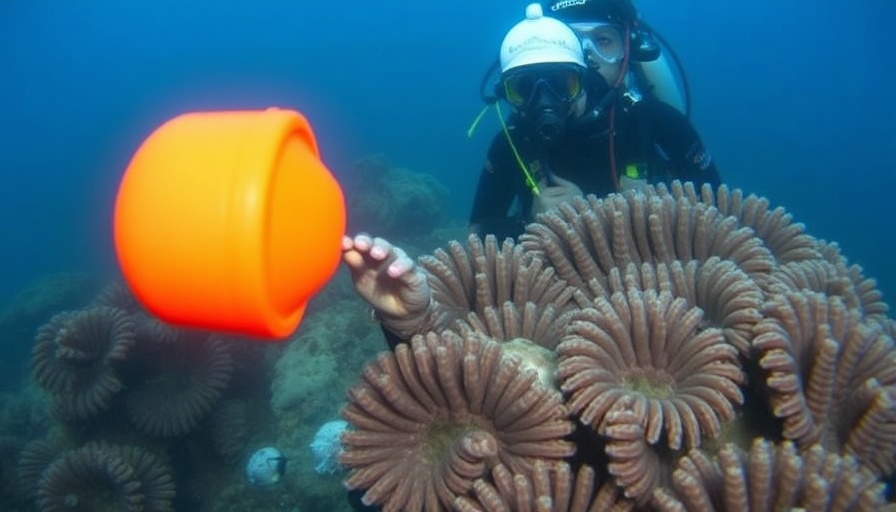
The Innovations of Surveillance in Coral Conservation
Marine scientists in Florida are leveraging technology to turn the tide on coral reef restoration with an inventive approach: underwater surveillance cameras, dubbed coral-baited remote underwater video systems (C-Bruvs). By effectively acting as an underwater ‘doorbell,’ these cameras capture real-time footage of predator fish, revealing which species are compromising coral restoration efforts.
Understanding Coral-Eating Fish with Critical Insights
The recent study conducted at Paradise Reef near Key Biscayne uncovered startling statistics: three specific fish species—redband parrotfish, foureye butterflyfish, and stoplight parrotfish—were responsible for consuming over 97% of the coral bait laid down by researchers. With coral cover in Florida declining by 90% since the 1970s, largely due to climate change and unprecedented ocean heat, this insight is essential for restoring these vital ecosystems.
How the Underwater Cameras Work
Funded by a grant from the Fish & Wildlife Foundation of Florida, researchers developed these cameras to be affordable and effective. Using GoPro technology with waterproof housing, the cameras are securely anchored underwater, documenting fish behavior over time. After overcoming challenges such as equipment theft (a “porch pirate” incident, as described humorously by the researchers), the footage has become a valuable resource in understanding predation patterns on coral reefs.
Implications for Future Reef Restoration Strategies
Identifying the leading coral predators not only aids coral restoration practitioners in selecting less impacted reef sites but also empowers them to choose the correct coral species that may survive these threats. Diego Lirman, a prominent coral restoration researcher, emphasized that these insights will help align restoration efforts with ecological realities, guiding effective strategies before large financial commitments to outplanting are made.
Technological Advances CRITICALLY Needed for Coral Resilience
As coral reefs face increasing threats from multiple fronts, the integration of artificial intelligence into video analysis promises to streamline research, enhancing how scientists track and mitigate fish predation. Automating the identification process would not only save time but could greatly improve restoration efficacy by ensuring future outplanting efforts are strategically planned.
A Call to Action for Coral Enthusiasts
Understanding the implications of these findings extends beyond marine science circles. For homebuyers, sellers, and property investors in coastal areas such as Dumfries, creating sustainable living environments begins with supporting initiatives that protect coral reefs. Engaging with local conservation efforts and advocating for sustainable practices can contribute significantly to preserving these essential ecosystems for generations to come.
 Add Row
Add Row  Add
Add 





 Add Row
Add Row  Add
Add 








Write A Comment